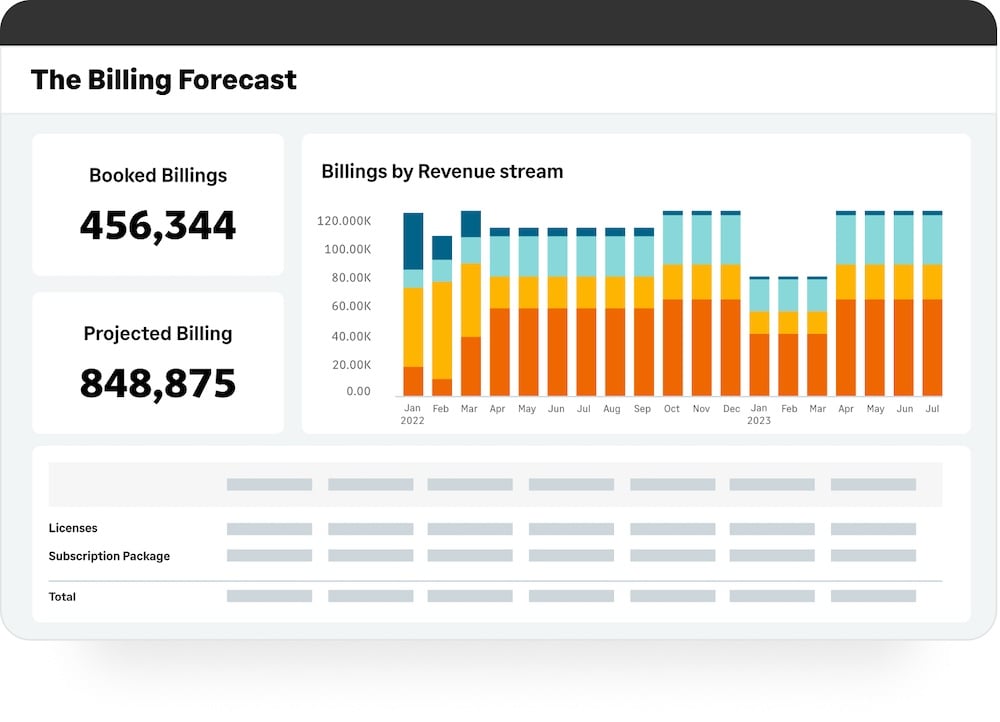Can your finance operating model scale with you?
Is it time to upgrade your finance operating model to keep pace with growth? We’ve got some expert tips.

As a SaaS CFO, there’s NOTHING better than achieving growth, right? You might think so, but failing to plan ahead and consider intelligent scalability can result in some serious problems. Your finance operating model is the key to reaping the rewards of SaaS growth without suffering the headaches that can come with it.
In this post, we’ll 1) Discuss what a finance operating model is and how it contributes to your control environment and scalability, 2) Explore the key elements of an effective SaaS finance operating model, 3) Dive into the role of technology in crafting your operating model and discuss steps you can take to improve its scalability.
If you’re ready for pain-free SaaS growth, let’s get going.
Your needs evolve with your maturity stage
As your company scales, your department’s financial processes and internal controls often need to grow more sophisticated in order to keep pace.
Take invoice approvals, for instance. Manual approval chains might not take that much time when you’re only working with a couple of vendors. But what about 50 or 100?
At that point, you’re looking at a significant chunk of wasted time and money for approval routings, and even risking manual errors.
The same holds true of your forecasting, and other financial processes. Creating a manual forecast might not seem like a huge drag on your time and cash when you’re first starting out.
But once you’ve scaled and have to grapple with a massive amount of financial data, it’s a serious drain on time and resources.

Your SaaS business can only scale successfully if your framework for essential finance and accounting workflows can keep up.
What’s a finance operating model?
A finance operating model is a strategic framework for the organization and execution of financial processes. It includes systems, controls, and workflows to support your financial management. Think of it as your finance and accounting setup.
Your finance operating model determines how your data is collected, analyzed, and used for reporting, forecasting, and other tasks.
Do you rely on spreadsheets and legacy tech for your finance and accounting workflows? Or have you embraced automation to maximize visibility, accuracy, and efficiency?

The purpose of an operating model is to ensure accuracy and efficiency in your financial processes. But going deeper than that, the real aim is to create a foundation of trust that you and other stakeholders can build on to achieve your goals.
Qualities of an effective SaaS finance operating model
As a finance leader, it’s important to step back and analyze your processes at a high level.
Templates are useful in all kinds of scenarios, and your finance operating model is like a template for shaping your department’s workflows.
An effective operating model prioritizes:
- Adaptability: Your finance operating system shouldn’t buckle under pressure. It should work as smoothly at 100,000 users as it did at 100. If your department starts to feel the strain of increased customer demand, something’s wrong. Scaling should proceed smoothly.
- Compliance: Your revenue recognition strategy should be able to seamlessly scale up, as should your ability to remain compliant with data security and privacy regulations.

- Agility and accuracy: An effective finance operating model prioritizes speed and efficiency without sacrificing accuracy.
- Strategic clarity: From reporting to forecasting, budgeting, and more, everything you do calls for financial visibility. As you scale, visibility into your financial and subscription data plays an important role in maintaining your momentum.
How can you objectively assess whether your finance operating model is still sufficient for your business needs?
Knowing when change is called for
Scaling your finance operating model across the business life cycle is crucial for supporting pain-free growth.
As your company progresses through different maturity stages, it’s important to be honest about whether your department’s status quo has run its course.
Below are two telltale signs your finance operating model is due for an upgrade.
Two warning signs your finance operating model is obsolete
Knowing what to watch out for can give you an “operating model roadmap.” You already know you want to prioritize accuracy, agility, scalability, and visibility. But how can you know if you’re missing the mark?
Below are two indicators that things are heading in the wrong direction.
1. Errors are creeping into your financial reporting.
Your reporting is the backbone of your forecasting, budgeting, and other essential workflows. If you can’t maintain absolute trust in your reporting data as you scale, you’re going to feel considerable pain in other areas.

Cloud financial management gives CFOs access to real-time SaaS metrics integration for seamless and accurate reporting.
2. Your financial control architecture is crumbling.
Financial controls are systems that are put in place to eliminate manual accounting errors or fraud.
If you’re relying on legacy data reconciliation, it’s only a matter of time until manual errors start becoming more common and severe. The same goes for AP approval chains and other workflows.
Essentially, the point is this. If you’re finding that your operating model is straining under the pressures and complexities that accompany SaaS growth, it’s time to consider a change.
Let’s look at how your tech stack relates to your scalability. It’s an important connection, but it’s one that CFOs sometimes miss until it’s too late.
The role of technology in scaling your finance operating model
Your SaaS finance tech stack is a make-or-break factor in whether your company can handle the pressures, problems, and complexities that accompany growth.
Over time, manual processes can erode the accuracy and efficiency of your financial workflows. This creates a dire lack of accuracy, trust, and internal clarity. Let’s dig a bit deeper.
The financial risks of scaling with legacy accounting tools
Manual processes pose a significant risk in terms of errors and inconsistencies, as they rely on human intervention instead of streamlined process automation.
Even your best employees get tired. Their minds wander, and sometimes they make mistakes. It’s inevitable.
Here’s the thing, though. Even one mistake can carry lasting consequences. An invoice that fell through the cracks in AP could lead to the loss of a vendor.
A solid controls foundation is essential for SaaS companies at any growth phase, but especially as your company matures.
Entrusting your company’s growth journey and financial health to manual processes can have serious and unforeseen consequences.
Legacy systems, which lack scalability, can also hinder your organization’s financial success by:
- Necessitating manual entries and reconciliations (inevitably followed by entry correction)
- Failing to meet stakeholders’ and board members’ increasing expectations
- Missing profit opportunities due to a lack of sophisticated analytics
- Interrupting compliance, resulting in hefty fines
Now let’s look at a few steps you can take to ensure that your company can meet its growth ambitions.
One of the most valuable skills a CFO can possess is the ability to help an organization pass through each growth stage as smoothly as possible. How can you make sure that happens at your company?
Steps to improve the scalability of your finance operating model
It’s important to understand how your control environment and your level of financial efficiency influence your company’s broader success.
Achieving higher market saturation feels great. But unless you’ve built a solid foundation around your controls and finance processes, the growth you worked so hard to achieve will start creating problems.
In their rush to expand, businesses sometimes focus on factors like sales strategy or product quality to the exclusion of all else. While these factors are essential, you need to pair them with a solid internal control environment to achieve sustainable growth.
Doing so will keep you agile in a rapidly evolving business landscape, allowing you to maintain your momentum.
But here’s the million-dollar question: how do you do that?
Put technology to work for you
Whether you’re a startup or a more established business, accounting automation software can minimize manual data entry, saving time and significantly reducing errors.
Implementing AI-powered systems ensures accuracy in your financial workflows, no matter the size of your company.
As you scale, the resilience of your controls and the efficiency of your workflows are put to a rigorous test.
Many SaaS CFOs are opting for cloud-based tools that utilize the internet for centralized data storage.
The elimination of data silos paired with the power of process automation offers a genuine competitive advantage for growing organizations.
Implementing best practices in financial management
As a SaaS CFO, leading the charge on effective financial management falls to you. Unless you lay a foundation of effective financial leadership at your SaaS organization, you’ll eventually hit bottlenecks and find it difficult to keep scaling.
You can avoid that by embracing financial management best practices such as:
- Steering clear of legacy financial management systems: For companies with a subscription business model, scaling is a complex balancing act. As a CFO, you’ll need to make pinpoint adjustments to your pricing and customer success strategies in order to stay competitive. That calls for a level of flexibility and visibility legacy tools can’t deliver.
- Creating a culture of connection: From your company’s digital marketing efforts to customer support and more, there’s a lot that goes on outside your department that hinges on financial data. Prioritize tools and processes that make it easy for stakeholders to access what they need at all times.
- Communicating the value of reliable financial controls: A CFO should understand the importance of an effective control environment better than anyone. That means you need to take ownership of making sure your team understands it too.
Your finance operating model must be able to scale with you. However, you can’t expect that to happen unless you lay the groundwork by making intelligent strategic decisions.
Are you positioned for long-term success?
With broken controls and inefficient financial systems, you’ll never be able to create lasting subscription cash flow. The necessary visibility, flexibility, and operational agility just aren’t there.
Succeeding in SaaS requires you to be attuned to your financial data as closely as a spider is attuned to its web. You should be able to detect even the slightest movements and respond to them appropriately and immediately. You can’t do that with an outdated operating model, and you also can’t manage it if you’re tracking the wrong KPIs for your business.
New and Improved SaaS Metrics for Subscription Businesses
To learn more about the most important metrics you can leverage to win your market, check out our infographic for SaaS CFOs.






Ask the author a question or share your advice